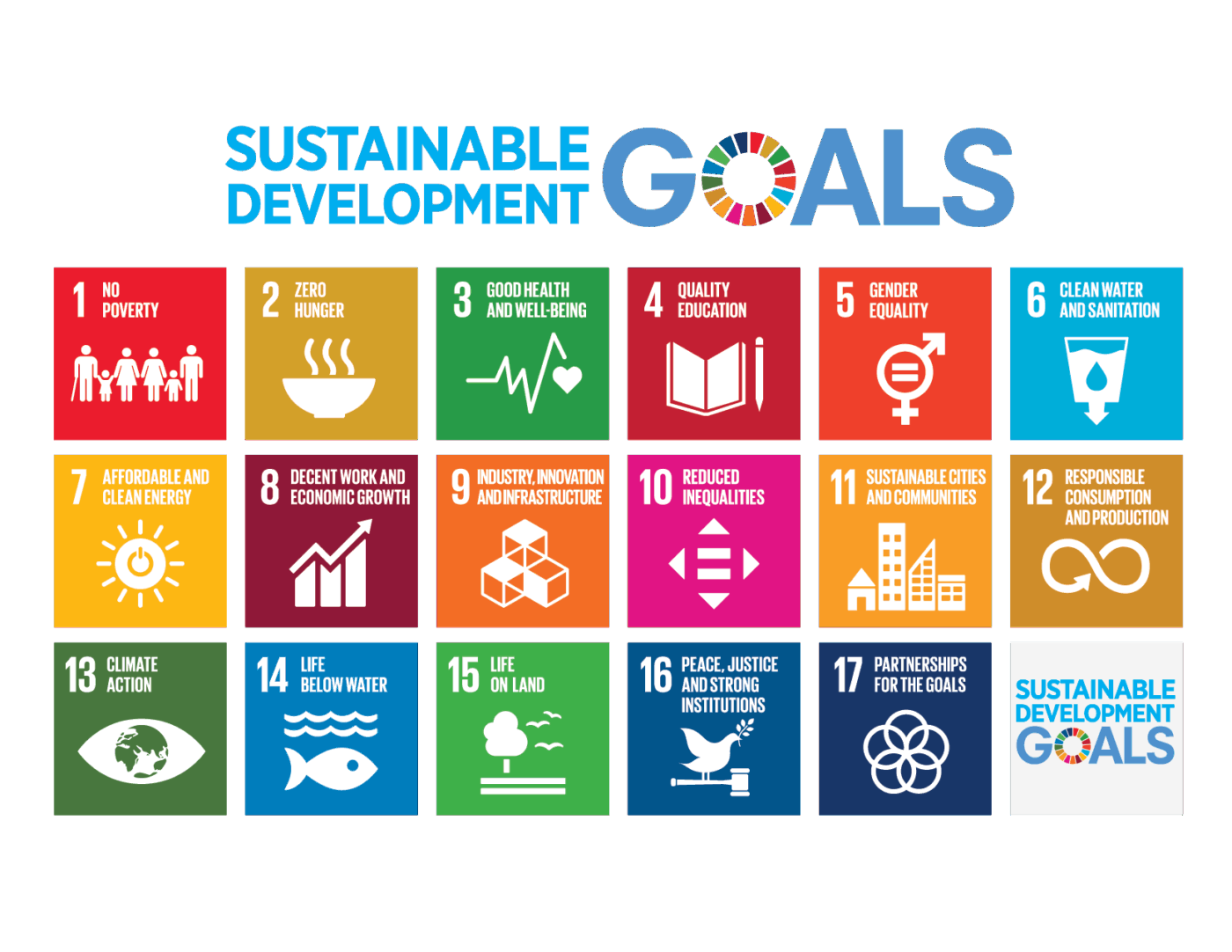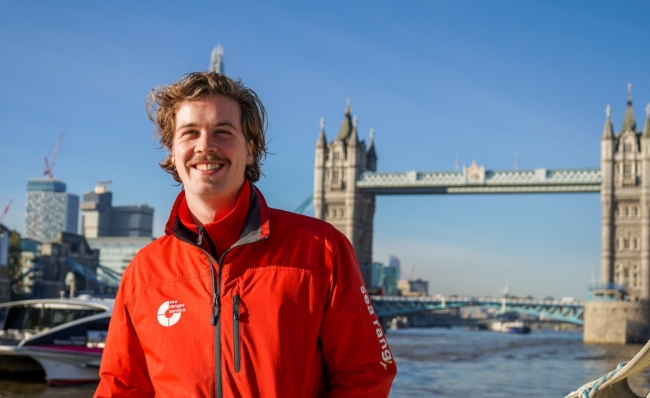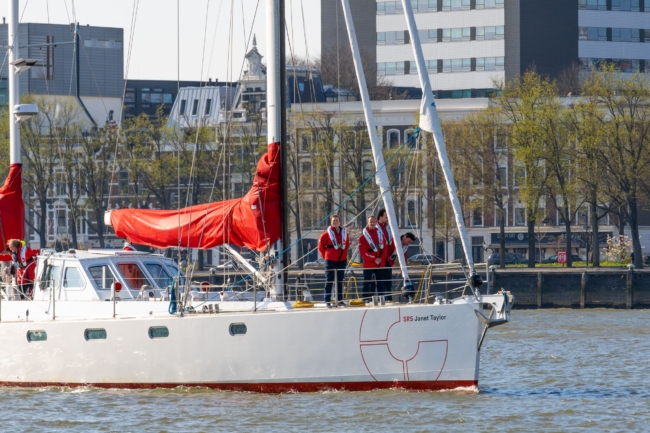At the Sea Ranger Service, we are passionate about the United Nations Sustainable Development Goals (SDGs) and their potential to create a more sustainable and equitable world. Through our work, we aim to contribute to multiple SDGs, with at least seven that align directly with our mission. But before diving into how we support these goals, let’s first provide a quick overview of the SDGs for anyone unfamiliar with them.
The SDGs are 17 ambitious global goals set by the UN to address challenges such as poverty, inequality, climate change, and environmental degradation. They provide a roadmap for governments, businesses, and individuals alike to work together towards a more sustainable future by 2030. The Sea Ranger Service is proud to play an active role in this mission. Here is how our work directly contributes to several key SDGs:
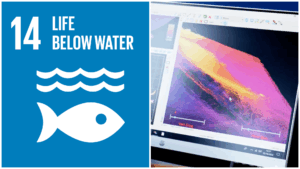
SDG 14: Life Below Water
Protecting marine ecosystems through active conservation
Among the 17 goals, SDG 14 is perhaps the most closely linked to our daily work. Protecting life below water is at the heart of what we do. Our Sea Rangers actively monitor and conserve vulnerable marine environments. Currently, less than 3% of the ocean is effectively protected. We need to protect at least 30% of the ocean to safeguard marine biodiversity and build ocean resilience.
There are 3,000+ known shipwreck sites in the North Sea, which serve not only as valuable maritime heritage sites but also as vital habitats for marine biodiversity. Ecologists have found a high abundance of fish around these sites, as the shipwrecks rise from the ocean floor, creating safe havens where fish can hide, hunt, and rest. The larger the wreck, the more marine life it sustains. Sea Rangers are monitoring these protected wrecks to ensure they are safeguarded from illegal activities, such as salvaging of historical artifacts, as these wrecks provide a unique glimpse into maritime history while supporting rich ecosystems.
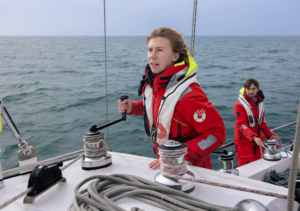
Seagrass meadows are another vital ecosystem where our work makes a difference. Since the 1980s, the Eastern Scheldt has lost more than 90% of its seagrass, mainly due to coastal protection works such as dams and the storm surge barrier. Today, conditions have improved, opening the door for restoration efforts.
Seagrass meadows serve as nurseries for countless marine species, offering shelter for juvenile fish and surfaces for adult fish to attach their eggs. Many organisms feed on seagrass directly or rely on the diverse life it supports. Meadows also oxygenate the water, reduce pathogens, and stabilize the seabed by softening waves and anchoring sediment with their roots, preventing erosion. By restoring and monitoring these meadows, our Sea Rangers help protect both marine biodiversity and the resilience of coastal environments.
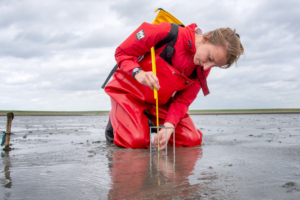
Whether it is through biodiversity and shipwreck monitoring, collecting data on marine species, or restoring critical habitats like seagrass meadows, our Sea Rangers are in the water contributing to the preservation of our oceans. Through this hands-on approach, we help safeguard marine biodiversity and ensure that these ecosystems can thrive for generations to come.
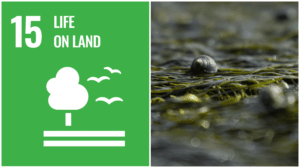
SDG 15: Life on Land
Connecting marine and terrestrial ecosystems through biodiversity protection
While our main focus is marine conservation, we recognise the intrinsic link between land and sea ecosystems, which is why we contribute to SDG 15. Healthy oceans are essential to maintaining biodiversity on land as well. The Sea Ranger Service actively works to halt biodiversity loss by protecting coastal environments, which serve as critical habitats for numerous species. Through coastal restoration projects and partnerships with various organisations, we support the preservation of biodiversity across ecosystems.
Our ongoing efforts to restore seagrass beds highlight this connection. In intertidal areas, seagrass plays a vital role not only for wildlife but also for coastal communities. Their leaves absorb the energy of waves and tides, allowing fine particles to settle, while their roots stabilise the sediment. This natural process reduces erosion, making seagrass a powerful ally in coastal protection and in adapting to sea level rise. At low tide, many bird species also rely on seagrass meadows as important feeding grounds. By restoring and monitoring these meadows, we support marine life while also strengthening the resilience of coastal ecosystems on land and at sea.
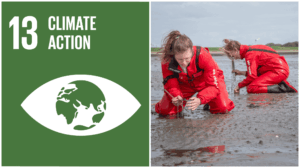
SDG 13: Climate Action
Taking immediate action to combat climate change
The Sea Ranger Service is taking concrete steps to mitigate effects of climate change, directly supporting SDG 13. By restoring critical marine habitats like seagrass beds, we are helping to enhance carbon sequestration in the ocean. Seagrass meadows, often referred to as the “lungs of the sea,” capture carbon dioxide at a rate much faster than forests, making them a vital ally in the fight against climate change. In fact, Seagrass accounts for 10% of the ocean’s capacity to store carbon, despite occupying just 0.2% of the sea floor. This small but mighty ecosystem plays a crucial role in mitigating climate change and supporting marine biodiversity.
The Sea Ranger Service actively restores seagrass in the Eastern Scheldt in the Netherlands, and the Bay of Arcachon in France. We conduct seed collection and monitoring across Denmark, Germany, Spain, and the UK. In 2022, we co-founded the Seagrass Consortium, an organisation officially affiliated with the UN.
In addition, our work in marine biodiversity conservation via shipwreck monitoring and hydrographic surveying contributes to keeping oceans healthy. Healthy oceans play a key role in regulating the Earth’s climate, and through our efforts, we aim to ensure that marine ecosystems remain robust.
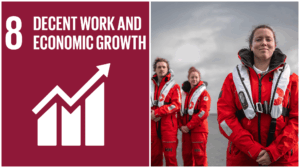
SDG 8: Decent Work and Economic Growth
Creating pathways into meaningful employment for young people
Every year, the Sea Ranger Service opens its doors to a new generation of Sea Rangers, offering young people the opportunity to step into meaningful work that directly contributes to ocean restoration. Applicants between the ages of 18 and 29 are welcome to apply, regardless of their educational background or work experience. What matters most is motivation, commitment, and a willingness to grow.
The journey begins at the Sea Ranger Bootcamp, a challenging selection programme run by navy veterans. Over the course of several days, participants test their physical endurance, teamwork skills, and mental resilience. The Bootcamp is more than a test, it’s a transformative experience where young people discover new strengths, confront personal limits, and build confidence. Even for those not selected as Sea Rangers, the Bootcamp provides lasting value: participants leave with sharper self-awareness and a clearer sense of direction for their future careers.
For those who are chosen, the reward is immediate employment as a Sea Ranger. From day one, they receive a fair salary, career coaching, and hands-on training while contributing to critical conservation work at sea. This way, the Sea Ranger Service not only creates jobs but also equips young people with the skills, discipline, and resilience that form the foundation of long-term career growth, whether within the maritime sector or beyond.
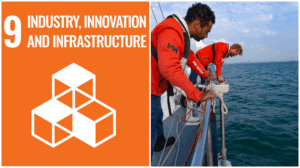
SDG 9: Industry, Innovation, and Infrastructure
Building a low-carbon future with cutting-edge maritime innovation
Innovation is a driving force behind the Sea Ranger Service, and our work aligns closely with SDG 9.
While sailing vessels themselves are not new, using them as operational work platforms for modern maritime tasks is highly innovative. Activities like hydrographic surveying, MPA monitoring, and ground-truthing usually depend on fuel-intensive ships to cover large distances. By carrying out this work under sail, we reduce emissions by up to 90% compared to conventional vessels. In 2022 and 2023 the Sea Ranger Service conducted a successful hydrographic surveying at an offshore test site, as well as an underwater shipwreck, off the coast of The Netherlands. The main objective of these initial surveys has been to validate the effective use of surveying equipment from a sailing work vessel to decarbonise the maritime sector as much as possible. By pursuing this type of innovation, we promote more sustainable maritime practices.
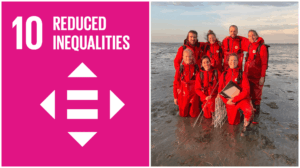
SDG 10: Reduced Inequalities
Empowering diverse communities through maritime training and employment
Reducing inequality is central to our mission. At the Sea Ranger Service, we offer training and employment opportunities to young people from diverse backgrounds. Our unique Bootcamp programme provides a pathway for individuals with little or no prior experience in the maritime sector to become Sea Rangers, gaining valuable skills and hands-on experience in ocean conservation and maritime operations.
We currently hold Bootcamps annually in the Netherlands and UK but aim to expand to other countries and welcome various collaborations.
This approach allows us to address economic disparities by providing employment in meaningful, sustainable work. We are proud to create an inclusive environment that empowers individuals who might otherwise struggle to access opportunities in the maritime industry or elsewhere. By fostering diversity and inclusion, we are working to reduce inequalities both within our organisation and in the wider sector.
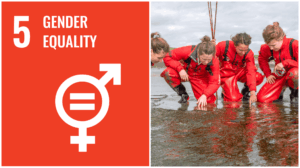
SDG 5: Gender Equality
Creating equal opportunities at sea
Gender equality is more than just a goal – it is a fundamental part of who the Sea Ranger Service are. We believe that everyone, regardless of gender, should have equal access to opportunities in the maritime sector. Historically, this has been a male-dominated field, but we are working to change that narrative.
Globally, women make up just 1.2% of seafarers, while at the Sea Ranger Service, 72% of the applicants since 2018 for the Sea Ranger role have been women.
We are proud to be a platform where women thrive in maritime careers. Today, 9 of our 15 Sea Rangers and all 4 Senior Sea Rangers are women, a clear reflection of our commitment to advancing gender diversity in the sector. Women who start as Sea Rangers are increasingly taking on more responsibility and leadership roles within our organisation, both onshore and offshore. Through the latter, the Sea Ranger Service is doing its part to close the gender gap and create a more inclusive maritime industry.
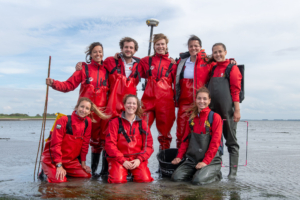
Closing the loop: bringing the SDGs into everyday action
The SDGs offer a framework for making our world more equitable, sustainable, and resilient. At the Sea Ranger Service, we are proud to align our work with these goals, and we are committed to contributing to the achievement of SDGs 5, 8, 9, 10, 13, 14, and 15.


